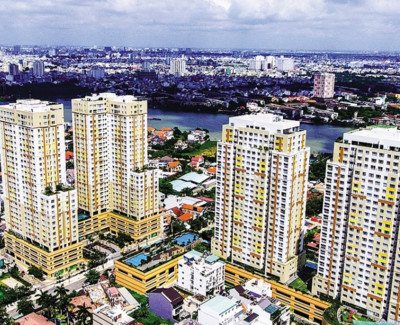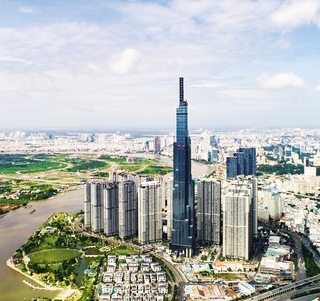 |
| A view of the under-construction first metro line in HCM City. The city plans to license high-rise residential complexes along the route under a new proposal by the Department of Construction. — Photo: VNE |
Under a new proposal for 2021-30 by the Department of Construction, new housing projects must align with the development of technical and social infrastructure and availability of land for public transport and parks.
They must also address city problems such as flooding and congestion and improve its landscapes and residents’ quality of life.
The focus will be on modern high-rises, increasing the ratio of apartment buildings in new projects, developing housing concomitantly with urban transport infrastructure, and moving people out of slums along canals.
Low-rise housing will be gradually transformed into high-rise housing to ensure efficient use of land that could be used to build new roads, parks and parking space.
In inner districts such as 1 and 3, priority will be given to renovating and replacing existing apartments built before 1975. No new high-rise residential projects will be allowed until 2030.
In districts 4, 5, 6, 8, 10, 11, Phu Nhuan, Tan Binh, Tan Phu, Go Vap and Binh Thanh, the department wants the number of high-rise condo projects limited unless there are plans to install technical infrastructure.
Under the plan, districts along the first metro line will also focus on development of social housing.
The line is expected to be completed by the end of 2020 and commercial operations are likely to begin next year. It will run some 20 kilometres from Ben Thanh in District 1 to Suoi Tien Theme Park in District 9.
For the five outlying districts of Cu Chi, Hoc Mon, Binh Chanh, Nha Be and Can Gio, priority will be given to projects in new residential areas, especially eco-tourism projects.
Development of new residential areas in the five districts will help reduce the population density in the inner city, according to the department.
In recent years, the construction of a number of high-rise apartments in the city has worsened traffic and adversely affected urban planning, especially in inner districts where populations are dense and roads are narrow.
A number of slums still exist in the city centre, especially along polluted canals, the department said.
HCM City has more than 1.9 million houses, of which 88 per cent are single houses, it said.
According to statistics from the HCM City Development Research Institute, between 1993 and 2010 the city created 770 new residential areas, which attracted two million residents.
Architect Ngo Viet Nam Son attributed such lopsided development to improper urban planning, too much focus on concrete buildings and encroachment of water bodies and greenery.
“HCM City needs to develop a comprehensive urban plan to develop housing that will address the problems.”
The department wants the city to encourage low-cost commercial, rental and social housing to prevent the construction of unlicensed housing in suburban areas.
The developers of the projects will be eligible for loans on easy terms.
The city targets providing housing of 22.8 square metres per capita by 2025. It expects to need an additional 20 million square metres of social housing by then.
Prime Minister Nguyen Xuan Phuc recently called on major cities such as HCM City and Hanoi to stop permitting high-rise condo buildings in the inner city and instead develop satellite towns to redistribute the population and workforce to reduce the burden on housing, traffic and employment. VNS

Slick action required by developers
As conflicts between high-rise apartment developers and their residents increase, some developers are struggling to improve their professionalism in building management.

Strong demand for high-end property in Vietnam
With robust economic growth in Vietnam for the past several years, foreign buyers are diving into the real estate market as is evident by the pent-up demand from those looking to buy.
 HCM City plans to stop construction of high-rise apartment buildings in downtown areas and focus instead on building such residential complexes along the first metro route in the eastern part of the city comprising districts 2, 9 and Thu Duc.
HCM City plans to stop construction of high-rise apartment buildings in downtown areas and focus instead on building such residential complexes along the first metro route in the eastern part of the city comprising districts 2, 9 and Thu Duc.